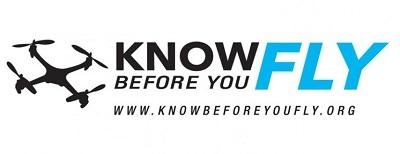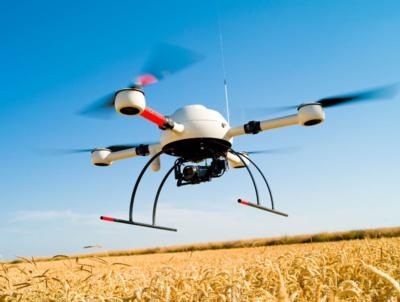Thu, Jan 19, 2017
Know Before You Fly Reminds UAS Users To Check For Flight Restrictions During The Presidential Inauguration
While this ‘Know Before You Fly’ reminder is primarily aimed at drone operators in the Washington, D.C. area, it’s also a reminder for drone operators to understand the Know Before You Fly program and what it offers. Of course, the presidential inauguration is a unique event, but many of the admonitions for caution and following the rules at this event can apply to other events.

In a Know Before You Fly bulletin UAS operators are reminded to check flight restrictions in effect around the Washington, D.C. area ahead of the Presidential Inauguration on January 20. During this time frame, all UAS (including model aircraft) operations will be prohibited within a 30 nautical mile radius of Ronald Reagan Washington National Airport (DCA), including the National Mall, U.S. Capitol and the White House.
The area within a 15 nautical mile radius of DCA is a Flight Restricted Zone (FRZ). No UAS flights are allowed in this area at any time without specific FAA authorization. In addition, the area within a 15 to 30 nautical mile radius of DCA is a Special Flight Rules Area (SFRA). Both the FRZ and SFRA will include additional flight restrictions between 9 a.m. ET and 7 p.m. ET on January 20.

It’s important to understand that these complex flight restrictions are aimed at both recreational and non-recreational drone operators. A recreational operator cannot get off the hook by saying they were just flying recreationally and were not actively participating in the event.
When TFRs are not in place, Know Before You Fly would like to remind flyers to follow these rules to keep the skies safe for all:
- Fly no higher than 400 feet.
- Fly within visual line of sight.
- Stay well clear of other aircraft.
- Never fly within 5 miles of an airport without contacting airport authorities or air traffic control.
- Keep well away from emergency response efforts, such as fires.
- Beware of FAA airspace requirements.
- Don’t fly under the influence.
- Make sure to register before your first flight.
Know Before You Fly was launched in December 2014 by the Association for Unmanned Vehicle Systems International and the Academy of Model Aeronautics in partnership with the Federal Aviation Administration, with the goal of spreading awareness about safe and responsible use of unmanned aircraft systems.
(Image from file)
More News
Aero Linx: Aviators Code Initiative (ACI) Innovative tools advancing aviation safety and offering a vision of excellence for aviators. The ACI materials are for use by aviation pra>[...]
Make Sure You NEVER Miss A New Story From Aero-News Network Do you ever feel like you never see posts from a certain person or page on Facebook or Instagram? Here’s how you c>[...]
From 2016 (YouTube Edition): Who You Gonna Call When You Have a Rocket Engine that Needs a Spacecraft? While at EAA AirVenture 2016, ANN CEO and Editor-In-Chief, Jim Campbell, sat >[...]
"In my opinion, if this isn't an excessive fine, I don't know what is... The odds are good that we're gonna be seeking review in the United States Supreme Court. So we gotta muster>[...]
Expedite Used by ATC when prompt compliance is required to avoid the development of an imminent situation. Expedite climb/descent normally indicates to a pilot that the approximate>[...]
 ANN's Daily Aero-Linx (04.30.25)
ANN's Daily Aero-Linx (04.30.25) ANN FAQ: Turn On Post Notifications
ANN FAQ: Turn On Post Notifications Classic Aero-TV: Agile Aeros Jeff Greason--Disruptive Aerospace Innovations
Classic Aero-TV: Agile Aeros Jeff Greason--Disruptive Aerospace Innovations Aero-News: Quote of the Day (04.30.25)
Aero-News: Quote of the Day (04.30.25) ANN's Daily Aero-Term (04.30.25): Expedite
ANN's Daily Aero-Term (04.30.25): Expedite




